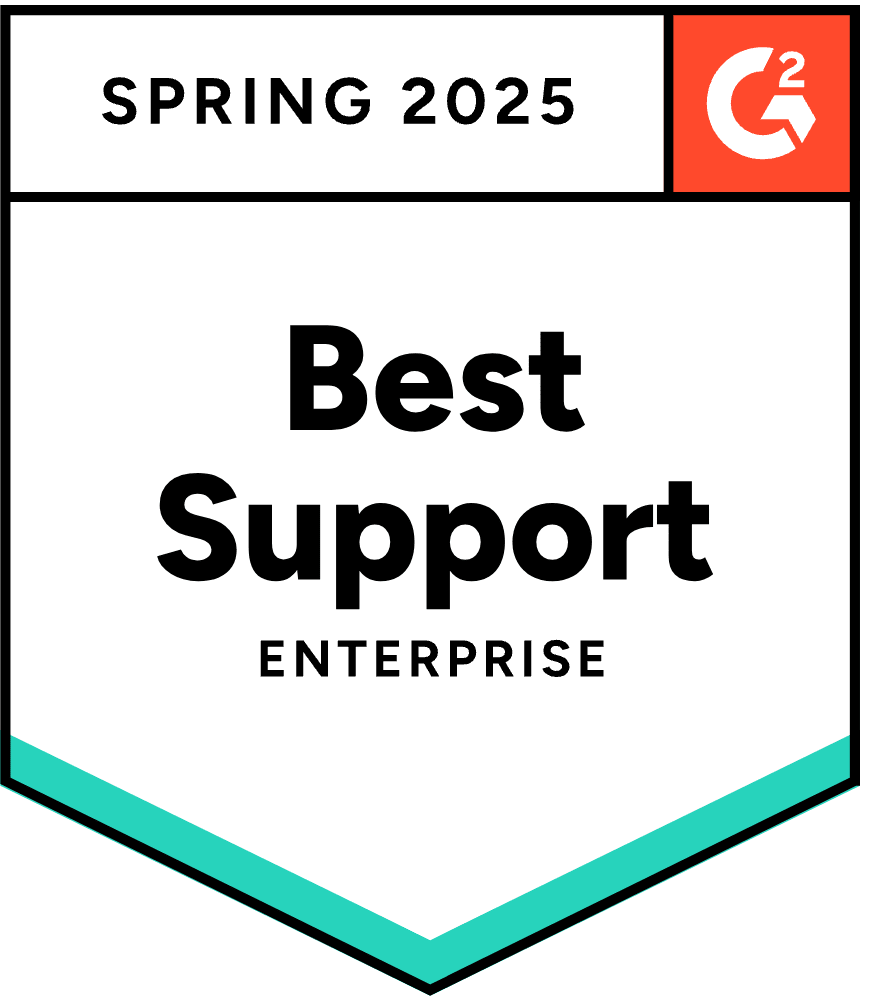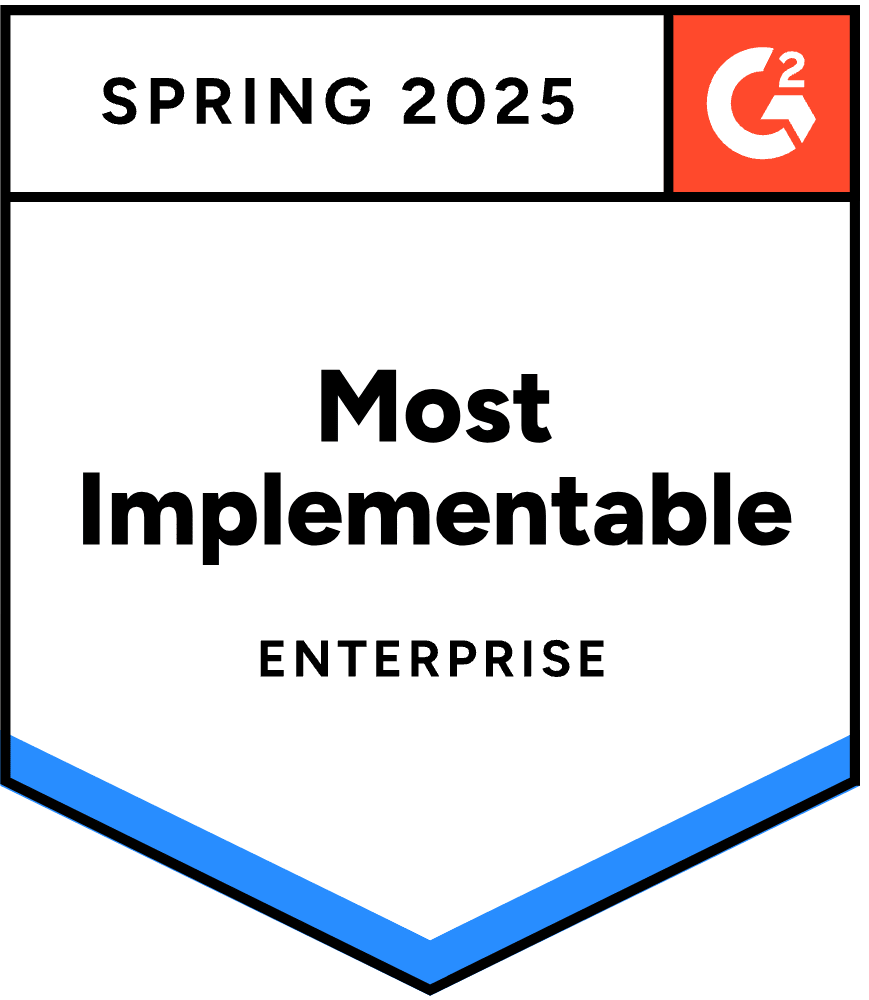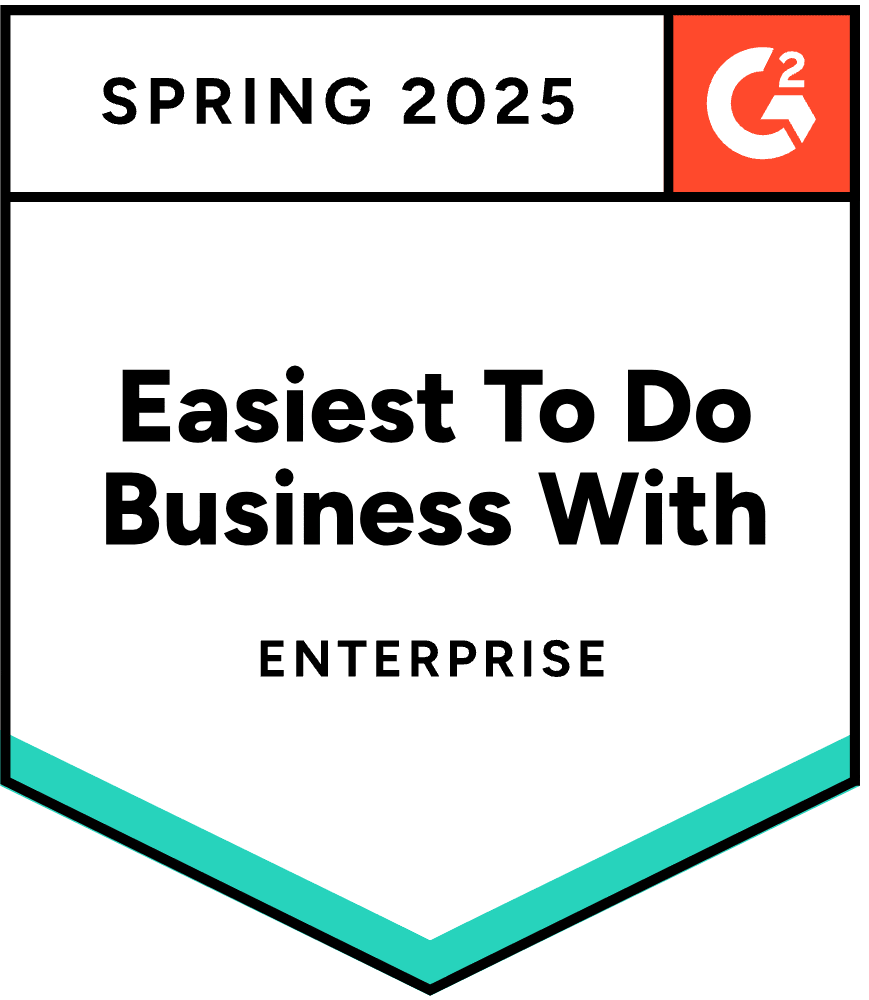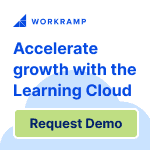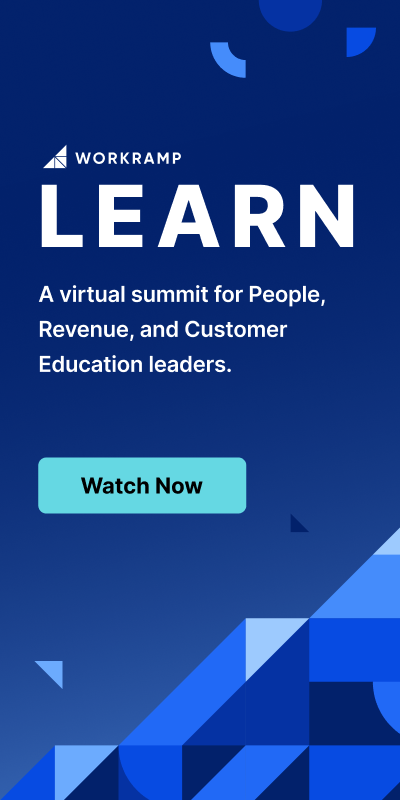LMS vs. CMS: What are the Differences?
Emily Homrok | WorkRamp Contributor
View bioLearning Tips Straight to Your Inbox
If you need to manage and deliver content to your team members, you’ve likely considered using an online tool to increase efficiency and empower your employees, customers, and partners. Two of the most common solutions businesses use are learning management systems (LMS) and content management systems (CMS).
When comparing LMS vs CMS platforms, understanding the difference is key to choosing the right solution for your team. In this guide, we’ll break down how they compare, when to use each, and why combining them can unlock even more value.
In this post:
TL;DR
- LMS = Learning-focused: Structured training, learner tracking, assessments.
- CMS = Content-focused: Storing, publishing, and managing digital content.
- Best together: Use an LMS for learning programs and a CMS to support them with on-demand resources.
Quick Definitions
What is an LMS? A learning management system (LMS) is a platform used to deliver, manage, and track training for employees, customers, or partners. It includes interactive features like quizzes, certifications, and progress tracking.
What is a CMS? A content management system (CMS) is a tool used to create, manage, and publish digital content, like blogs, web pages, and documents. It’s optimized for content organization—not learning paths.
LMS vs. CMS: similarities and differences
Though both can be used to educate and empower sales reps or other employees, there are also many ways in which learning management systems differ from content management systems. While LMS and CMS platforms can support similar goals, they’re designed for very different functions—and aren’t interchangeable.
Here’s an analogy you may find helpful: Think of an LMS as a university offering that delivers prescriptive, tailor-made courses based on a curriculum. This allows learners to cultivate expertise and test their comprehension, translating to more skilled employees—and, as a result, more successful organizations.
If LMSs are schools or learning academies, CMSs are digital textbooks– tools that supplement and reinforce the curriculum, serving as quick reference points for learners.
Courses and textbooks each deliver value on their own, but learning is optimized when students have access to both. Content and learning management systems can work together the same way.
| Feature | LMS | CMS |
| Primary Purpose | Deliver & track learning | Create & manage digital content |
| User Focus | Learners | Content managers, marketers |
| Assessments | ✅ Yes | ❌ No |
| Certifications | ✅ Yes | ❌ No |
| Progress Tracking | ✅ Yes | ❌ No |
| SEO & Web Publishing | ❌ Limited | ✅ Strong |
| Interactivity (quizzes, gamification) | ✅ Yes | ❌ No |
| Common Use Case | Employee/customer training | Internal docs and sales content |
LMS vs. CMS: How they’re the same
At a high level, CMS and LMS share some similarities in terms of managing content:
- Both allow users to create, organize, and publish content in a structured manner
- Each provides a centralized platform for content management, making it easier to collaborate and keep materials up to date
- Both systems can be customized to maintain brand consistency across experiences
LMS vs. CMS: How they’re different
While CMSs focus on content publication and management, LMSs go one step beyond by providing comprehensive learning and training features. Let’s review some of the critical differences between LMS and CMS platforms:
- Purpose: LMSs are purpose-built for structured training and development. CMSs are built for storing, managing, and sharing content.
- Audience: LMSs are learner-focused. CMSs are content-focused.
- Capabilities: LMSs support tracking, testing, and engagement features like quizzes and certifications. CMSs generally do not.
- Use Cases: Use LMSs for compliance training, onboarding, and sales enablement. Use CMSs for publishing documentation, sales decks, or blogs.
What is a learning management system (LMS)?
Research shows that there are already more than 73 million LMS users, with managers and executives making up the most significant percentage of those users. So what’s an LMS, what benefits does it provide for your business, and what are some LMS use cases?
An LMS is an online system, such as a cloud-based platform, that lets you supply curated, custom-built educational content for team members.
The purpose of an LMS is to facilitate the process of creating and deploying educational courses, training materials, and other learning pathways for employees, customers, and partners.
For that reason, an LMS is ideally suited for situations where learners need to be guided through structured courses, interactive exercises, and high-complexity training materials.
An LMS also makes it easy for administrators to track and monitor learners’ progress, such as testing their skills with assessments or tracking their course completion rates and other crucial metrics.
As a result, it’s faster to identify—and close—any skill or performance gaps impacting your organization’s productivity and bottom-line revenue.
The takeaway? An LMS platform helps your organization develop, deliver, and monitor online training programs and educational content tailored to your brand or industry.
LMS features
To deliver the strongest outcomes—and the best ROI—an LMS needs to be scalable, easy to navigate, and, most importantly, fun to use.
For instance, The Learning Cloud from WorkRamp incorporates trends like gamification and video-based learning to make content more accessible, memorable, and engaging for learners. Creating challenges and leaderboards, for example, is a perfect way to gamify learning and make the platform enjoyable for users.
Other LMS features to look for include:
- Ability to change user roles and permissions
- Accessibility and mobile learning
- Automation of routine tasks
- Branding and white-labeling
- Certification tracking
- Course authoring capabilities
- Customizable learning paths
- Data reporting
- Integrations
- Learning portals within the LMS
- Microlearning
- Quizzes, tests, and/or exams
- SCORM and xAPI compliance
- Self-assessment features
- Single sign-on
- Social learning features
- Support for multiple languages
Learn more about finding the best LMS for your business.
LMS Pros
There are numerous benefits to using an LMS to accomplish your employee and/or customer and partner training objectives, from compliance and safety training to new employee onboarding.
Here are just a few ways the right learning platform can help you achieve your most ambitious L&D goals:
- Employees build and acquire skills, creating a more competitive workforce
- Employee education and training programs help you attract and retain highly-qualified team members
- You can track (and increase) the results and ROI you’re getting out of your training programs
LMS Cons
It’s important to be aware of some potential pitfalls when selecting an LMS for your business:
- Some LMS platforms might lack the features your organization needs
- Traditional platforms take weeks or months to set up, but WorkRamp can be configured and deployed in just days
The takeaway is that it’s crucial to research and compare different learning management systems before you choose a platform for your organization.
When to use an LMS
An LMS is ideally suited for situations where learners need to be guided through structured courses, interactive exercises, or high-complexity training materials. Use a learning management system when you need to:
- Train employees with consistent, interactive programs (e.g., onboarding, compliance)
- Support virtual classrooms for schools, universities, or online courses
- Provide professional development through structured, self-paced learning
- Track progress and assess knowledge with certifications or quizzes
LMS Example
The Learning Cloud is an all-in-one LMS designed to empower learning and development for your employees, partners, and customers. The Learning Cloud allows admins to:
- Create and manage courses
- Supplement courses with pre-built, off-the-shelf learning content
- Remove, revise, and update learning content
- Track learners’ progress and engagement
- Learners can participate in collaborative activities and challenges, test their skill mastery through self-assessments, enhance their knowledge through personalized learning paths.
The Learning Cloud supports various content formats, such as text, video, and interactive quizzes, making it a versatile tool for online learning. With its user-friendly interface and extensive customization options, the Learning Cloud provides a start-to-finish solution for training, upskilling, and reskilling.
What is a content management system (CMS)?
A content management system, or CMS, provides a platform or framework to publish content to the web for internal and/or external sharing.
CMS features
Some typical features of a CMS include:
- A powerful, centralized dashboard or command center for uploading content
- A system of tags and labels that make it easier to find and organize content
- Version control and creation of back-ups
- Basic SEO tools, such as features to help you write meta descriptions
- Various integrations, such as integrations with Google Analytics, Amazon Web Services SES, Salesforce, HubSpot, Vimeo, and SEMrush, along with other AI, federated search, marketing, and analytics integrations
CMS Pros
Here are a few of the benefits of using a CMS:
- A CMS makes it simpler to distribute and edit all types of content across all types of channels
- Content management systems can be quickly set up and deployed
- You can create and publish content without needing knowledge of CSS, HTML, or any other coding language
CMS Cons
A CMS facilitates the process of publishing and editing content, but it does have some limitations:
- CMSs tend to lack some of the interactive features of an LMS
- CMSs don’t typically include features for testing or assessing knowledge and comprehension in-depth
Despite these limitations, a content management system offers value by making it fast and simple to store and manage various content types. You can overcome these limitations and supercharge your CMS by combining your content management system with a learning management system, as we’ll explore below.
When to use a CMS
There are many potential use cases for a CMS, depending on what type of platform you use. For instance, one type of CMS is a sales CMS, like the Learning Cloud.
A sales CMS makes it simple to upload, organize, and share data with your sales and marketing teams. The outcome? More closed deals, better rep efficiency, and bigger wins for your organization.
Learn more about using a sales enablement platform.
Other types of CMS platforms include enterprise CMSs (ECMSs), digital asset management systems (DAMSs), and web content management systems (WCMSs). Use a content management system when you need to:
- Create and manage content like blogs, landing pages, and videos—no coding required
- Organize internal or external content with tags, categories, and version control
- Support sales enablement by making sales collateral easy to access and share
- Improve SEO with built-in tools like meta tags, clean URLs, and sitemap generators
These are just a few scenarios where you might consider using a CMS. But remember—as we touched on earlier, content management systems often deliver the best value when paired with learning management systems.
Integrating a sales CMS with an LMS enables your organization to reap the following benefits:
- Enable sales reps to easily access sales enablement content to help them perform better
- Guide content strategy to match your team’s needs, avoid duplicate work, and ensure outdated content isn’t shared with prospects or internal employees
- Learners can easily access your LMS and CMS at the same time using single sign-on (SSO)
- Eliminate the need to update your CMS and LMS separately, saving you time and effort
WorkRamp CMS combines the power of an LMS and CMS for all your revenue enablement learning and content.
CMS example
One well-known example of a content management system is WordPress, which lets you publish blog posts, images, videos, and other content without the need for advanced web design skills.
As mentioned above, the Learning Cloud is a unified LMS and CMS that allows teams to centralize learning content in a single platform.
LMS vs. CMS: Use an all-in-one platform
Choosing between an LMS vs CMS? The best solution might be a platform that offers both. Combine the power of a sales CMS with the benefits of an LMS to drive growth, boost revenue, and build a better-equipped workforce.
From training your sales reps, management team, and new hires to tracking engagement in courses and certification programs, the Learning Cloud helps you create and deploy training for your employee and customer needs on a single platform.
The Learning Cloud also integrates with your existing tech stack to help you cut down on using disparate learning tools and streamline training in a single, centralized platform.
FAQs: LMS vs CMS
What is the difference between LMS and CMS in training?
An LMS is designed to deliver structured training and measure learning progress, while a CMS focuses on managing and distributing content like documents, videos, or web pages. In training, LMSs are ideal for interactive learning, tracking, and certifications—CMSs supplement LMSs by storing reference materials.
Can a CMS be used as an LMS?
Not effectively. While you can publish educational content through a CMS, it lacks critical learning features like quizzes, tracking, and learner assessments that are core to an LMS.
Do I need both an LMS and a CMS?
If your organization delivers structured training and manages a library of reference materials, yes. An LMS handles learning delivery, while a CMS ensures your content is easy to access and manage. Together, they create a more complete learning ecosystem.
Is WorkRamp a CMS or LMS?
WorkRamp is a unified LMS + CMS platform designed to power both learning and content management in one place. It supports interactive training, certifications, and progress tracking while also enabling teams to manage sales enablement and documentation needs.
How do LMS and CMS integrations work?
Integrated systems let you sync content, users, and reporting across both platforms. This ensures learners can seamlessly move between structured courses and supporting resources while admins avoid duplicate work.
✅ Ready to see it in action? Contact us to schedule your personalized demo of the Learning Cloud.
Complete the form for a custom demo.
Recent Posts
- Onboarding with an LMS: How to Set New Hires Up for Success July 16, 2025
- Why Secure LMS Platforms Are a Must for Regulated Industries July 10, 2025
- Top LMS Integrations That Power Smarter, Faster Learning July 2, 2025
- Introducing WorkRamp Analytics Studio: Unlocking Your Data Insights with AI June 30, 2025
- 11 AI LMS for AI-Powered Learning June 27, 2025
Emily Homrok
WorkRamp ContributorYou might also like
Use training content to enhance employees' knowledge and skills
Training is the main factor that drives employee engagement and performance. Discover the best types of training content to add to your program
Read More
What are the benefits of online learning?
When it comes to professional development and continued learning, online courses and programs offer several advantages over traditional in-person options.
Read More
Create engaging eLearning content for your teams
eLearning gives organizations the flexibility that other online courses can offer, but creating courses that are engaging and impactful can be harder than you think.
Read More
Decrease Ramp Time and Increase Revenue
Get in touch to learn how WorkRamp can help you achieve your learning and development goals.
Request a Demo